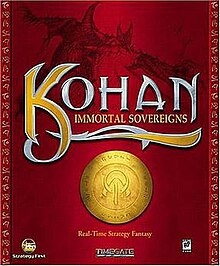
Unreal is a first-person shooter video game developed by Epic MegaGames and Digital Extremes and published by GT Interactive for Microsoft Windows in May 1998. It was powered by Unreal Engine, an original game engine. The game reached sales of 1.5 million units by 2002.

Sid Meier's Civilization II is a turn-based strategy video game in the Civilization series, developed and published by MicroProse. It was released in 1996 for PCs, and later ported to the PlayStation by Activision.

Sid Meier's Civilization III is the third installment of the Sid Meier's Civilization turn-based strategy video game series. It was released in 2001, and followed by Civilization IV. Unlike the original game, Civilization III was not designed by Sid Meier, but by Jeff Briggs, a game designer, and Soren Johnson, a game programmer.

Age of Wonders II: The Wizard's Throne is a turn-based strategy video game in a fantasy setting. The sequel to Age of Wonders, it was developed by Dutch video game developer Triumph Studios.

Fly! is a flight simulator video game for Windows and Macintosh developed by Terminal Reality and published by Gathering of Developers.
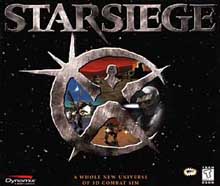
Starsiege is a mecha-style vehicle simulation game developed by Dynamix and released in 1999. Starsiege is set in the Metaltech/Earthsiege universe, which contains its predecessors Earthsiege (1994), Battledrome (1994), and Earthsiege 2 (1996). This universe also includes action game Hunter Hunted (1996), strategy games Mission Force: Cyberstorm (1996) and Cyberstorm 2: Corporate Wars (1998). It also includes the sequelsStarsiege: Tribes and all subsequent Tribes titles. In 2015, this game and the rest of the Metaltech/Tribes series were released as freeware by Hi-Rez Studios, but Battledrome and the Cyberstorm series were not.
TimeGate Studios was an American video game developer based in Sugar Land, Texas. The company, which was founded in 1998, released eight titles before closing in 2013.

Stronghold is a historical real-time strategy video game developed by Firefly Studios and published in 2001 by Gathering of Developers for Microsoft Windows and Mac OS X. The game focuses primarily on conquest and expansion through military pursuits but also has prominent economic and infrastructure development elements. There is both an economic and a military campaign to be played and both are discussed in the game manual. In the English version, the game takes place in Medieval Britain around the year 1066; however, since there is not always a time limit, scenarios can continue hundreds of years beyond that date.

4x4 Evo is a video game developed by Terminal Reality for the Windows, Macintosh, Sega Dreamcast, and PlayStation 2 platforms. It is one of the first console games to have cross-platform online play where Dreamcast, Macintosh, and Windows versions of the game appear online at the same time. The game can use maps created by users to download onto a hard drive as well as a Dreamcast VMU. All versions of the game are similar in quality and gameplay although the online systems feature a mode to customize the players' own truck and use it online. The game is still online-capable on all systems except for PlayStation 2. This was Terminal Reality's only video game to be released for the Dreamcast.

Monopoly Tycoon is a construction and management simulation PC game published in 2001 by Infogrames Interactive and developed by Deep Red Games. The player operates a business that owns stores and apartments in a city derived from the Monopoly board game. Instead of using dice, the game relies more on the speed and innovativeness of the players. In the standard mode, the user plays against the AI opponents. In the multiplayer version, players go against other online players in order to gain victory.

Sacrifice is a real-time strategy video game published by Interplay Entertainment in 2000 for Microsoft Windows platform. Developed by Shiny Entertainment, the game features elements of action and other genres. Players control wizards who fight each other with spells and summoned creatures. The game was ported to Mac OS 9.2 in 2001.

Dominion: Storm Over Gift 3 is a military science fiction real-time strategy video game developed by Ion Storm, published by Eidos Interactive, and released for Microsoft Windows in 1998. The game was originally developed as a spin-off of the mech simulation game G-Nome by 7th Level. Ion Storm acquired both Dominion and its lead designer, Todd Porter, from 7th Level for completion.
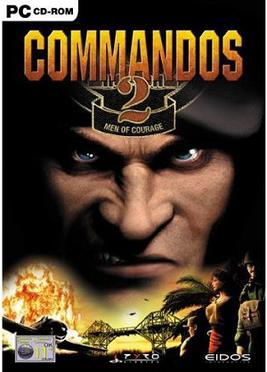
Commandos 2: Men of Courage is a real-time tactics video game, developed by Pyro Studios, published by Eidos Interactive, and released on September 20, 2001. It is a sequel to Commandos: Behind Enemy Lines and the second installment of the Commandos series, and is the only strategy game of the series to be designed not only for Microsoft Windows, but also for PlayStation 2 and Xbox. The game sees players taking control of a squad of commandos, along with various allied units, as they sneak behind enemy lines to accomplish various missions in World War II, between 1941 and 1944, that will help them to thwart the war efforts of the Germans and the Japanese. The game features several improvements to the gameplay from its predecessor, including the ability to use enemy weapons and explore interior locations, the inclusion of three new commandos, a number of new skills for the original six members along with their other abilities, and new pieces of equipment to help overcome the enemy.
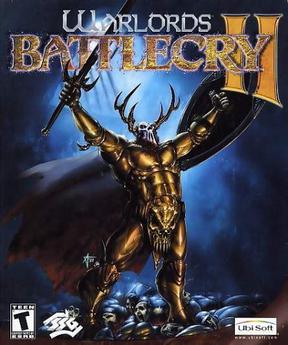
Warlords Battlecry II is a real-time strategy and role-playing game, developed by Strategic Studies Group (SSG) as the sequel to Warlords Battlecry. It was released on March 12, 2002. The game requires the player to build buildings and create units in order to defeat the enemy, while sending their hero on optional quests.

Close Combat is a 1996 real-time computer wargame developed by Atomic Games and published by Microsoft. Set during World War II, it simulates the conflict between the United States' 29th Infantry Division and Germany's 352nd Infantry Division after the Invasion of Normandy. The player controls an artificially intelligent army whose behavior is dictated by psychological models: each soldier makes decisions based on the circumstances of the battlefield and can disobey the player's orders.
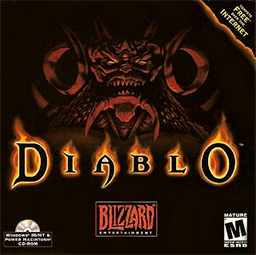
Diablo is an action role-playing video game developed by Blizzard North and released by Blizzard Entertainment in January 1997, and is the first installment in the video game series of the same name.

Age of Empires (AoE) is a real-time strategy video game based on history, developed by Ensemble Studios and published by Microsoft, and the first game in the Age of Empires series. The game uses the Genie Engine, a 2D sprite-based game engine. The game allows the user to act as the leader of an ancient civilization by advancing it through four ages, gaining access to new and improved units with each advance.

Warcraft II: Tides of Darkness is a fantasy real-time strategy computer game developed by Blizzard Entertainment and released for MS-DOS and Microsoft Windows in 1995 and Mac OS in 1996 by Blizzard's parent, Davidson & Associates. A sequel to Warcraft: Orcs & Humans, the game was met with positive reviews and won most of the major PC gaming awards in 1996. In 1996, Blizzard released an expansion pack, Warcraft II: Beyond the Dark Portal, for DOS and Mac OS, and a compilation, Warcraft II: The Dark Saga, for the PlayStation and Sega Saturn. The Battle.net edition, released in 1999, included Warcraft II: Beyond the Dark Portal, provided Blizzard's online gaming service, and replaced the MS-DOS version with a Windows one.
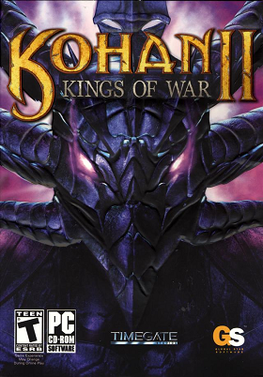
Kohan II: Kings of War is a real-time strategy video game developed by TimeGate Studios. It is the sequel to Kohan: Immortal Sovereigns.
